• Moscow State University was founded on the initiative of Mikhail Lomonosov on 12th January 1755. It inspired the democratisation of education in Russia, with students and teachers of non-noble backgrounds, lectures and library open to the public, and publishing houses. The university soon flourished into the educational, scientific and cultural centre of Russia
• MSU expanded greatly in the Soviet period. Emphasis was placed on science and technology, culminating in truly pioneering research and discoveries. However, the ideology of the regime negatively affected academic development across the board, particularly in the humanities
• Today, Moscow State University remains Russia’s top university, attended by over 40,000 students studying nearly all branches of modern science and humanities. It works closely with universities throughout the world and is involved in many educational and research projects
Moscow State University is Russia’s oldest university and the educational and scientific centre of the country, counting Noble Laureates, renowned scientists, intellectuals and political figures among its current and former staff and students. Its main campus is perched on a hilltop overlooking Moscow and is home to one of the capital’s most commanding buildings. Aside from exploring the campus to get a glimpse of life at Russia’s top university, you can visit Moscow State University’s many affiliated attractions on campus and around the city, including the Zoological Museum, Museum of Geology, Botanical Gardens, and viewing platform from the 32nd storey of the main building.

Photo by I.s.kopytov on Wikipedia
Moscow State University was established in 1755 on the initiative of acclaimed intellectual and polymath Mikhail Lomonosov, and was known as the Imperial Moscow University until 1917. At the time of opening it consisted of three faculties – philosophy, law, and medicine – and was attended by 100 students. Lectures were delivered either in Latin, the language of educated people at the time, or in Russian. The university was initially located in the Principal Medical Store on Red Square, whose position is now occupied by the State Historical Museum.
Did you know? Moscow State University was founded on 12th January 1755 (Old Style, corresponding to 25th January New Style), the day of Saint Tatiana. Since then, Tatiana has been considered the patron saint of students, and Students’ Day is celebrated on 25th January every year. It has become customary on Students’ Day for the university Rector to treat students to mead brewed according to his secret recipe.
Imperial Moscow University played an outstanding role in the democratisation of education in Russia. Mikhail Lomonosov pointed out that European universities valued first and foremost the academic achievements of a student, and not their social standing or family background, and from its establishment, elitism was alien to the spirit of the university community. Non-nobles were allowed to enrol, and only serfs were not admitted; by the late 18th century, the majority of students and professors were of non-noble backgrounds. Initially, tuition at the university was free for all students, and later scholarships were funded by rich merchant families who were the patrons of the university. Lectures were open to the public, as was the university library, which remained Moscow’s only public library for a century. A publishing house and bookshop were established on campus in 1756, printing Imperial Russia’s most popular newspaper, Moskovskie Vedomosti (Moscow Gazette), as well as Moscow’s first literary periodical, Poleznoe Uveselenie (Useful Entertainment).
By the 18th century, Imperial Moscow University had become the educational, scientific, and cultural centre of Russia and was well established in the international community. This continued into the 19th century, as the university was a melting pot for all sections of society and attracted freethinking people concerned with the future of Russia. It was often a real battleground between the Westernisers and Slavophiles (supporters of Western ideas and those who thought Russia had its own unique way of development). With the abolition of serfdom, the university went through a period of reforms, as the country required highly qualified specialists in all sectors of work. In the second half of the 19th and early 20th centuries, Imperial Moscow University founded a large number of scientific and intellectual societies and educational, historical, and cultural institutions including the Zoological Gardens, Anthropological Museum, and the Pushkin Museum of Fine Arts in Moscow, and the Academy of Arts in St Petersburg.
Did you know? The French invasion of Moscow in 1812 desecrated the university, with the total destruction of the library, archives, museum, and laboratories. Thanks to the donations of intellectuals from all over the country, the restoration of the university was soon made possible.
As a powerful centre of knowledge which closely followed intellectual developments elsewhere in Europe, university life became increasingly politicised. This came to a head at the beginning of the 20th century, when the emergence of social-democratic organisations caused the Tsarist government to threaten to close the university, bring troops onto campus, and expel professors and students. This conflict continued until the outbreak of the First World War.
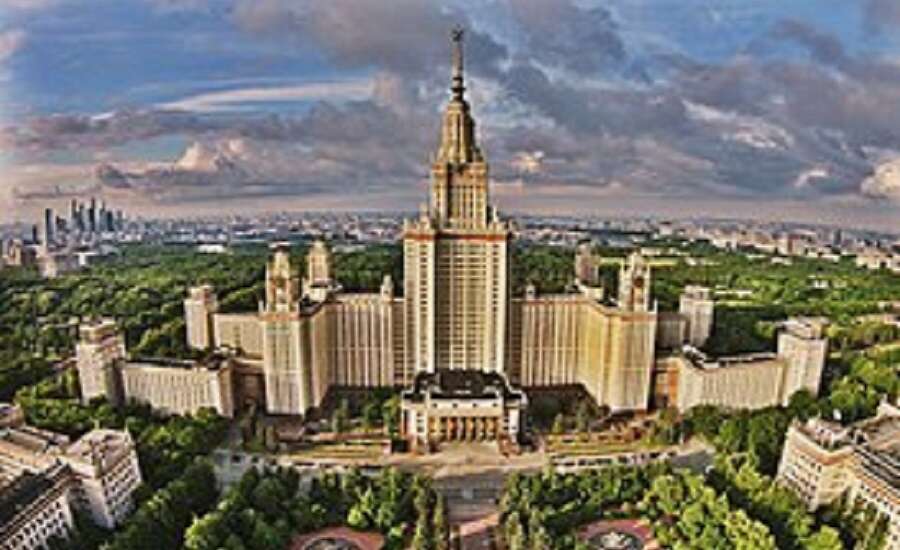
Photo on Wikipedia
The Russian Revolution changed the entire system of higher education: in accordance with a decree issued in 1918, any person over the age of 16, regardless of gender or background, could attend any higher educational institution even without a certificate of secondary school graduation. What’s more, tuition fees were abolished and grants were provided to all. These measures hugely opened up higher education to the wider population, and by 1922 over 20,000 students attended Moscow State University. As science and technology were considered a national priority, distinct emphasis was placed on practical classes and scientific and mathematic disciplines. By the outbreak of the Second World War, MSU comprised 75 departments, 11 research institutes, 66 laboratories, four museums, and two observatories.
Nevertheless, the university’s primary focus was training as many students as possible for the Soviet state apparatus. The quality of teaching fell as many esteemed scholars left (or were expelled from) the university. Faculties which were considered to be ‘poisoned’ by the ideology of the old regime, such as the Faculties of Law, History and Philology, were abolished and replaced with the Faculties of Social Sciences, whose aim was to disseminate Soviet ideology and the ideas of scientific socialism; the humanities were only reintroduced 10 years later in a separate institute altogether. Stalin’s political repressions negatively affected the development of academic research. Soviet scientists and scholars were deprived of contact with their colleagues abroad, persecuted, imprisoned, and even executed, and certain branches of science were condemned as propagating an ideology alien to Communist ideas. Many thousands of students and staff were drafted to fight in the Second World War, 3000 of whom lost their lives. During the war, the university focused on military science, inventing new explosives and developing aircraft.
In 1940, the university was renamed the Moscow State University named after M. V. Lomonosov, the name which it holds to this day. In the post-war period, the new campus was built on Vorobyovy Gory (Sparrow Hills) and equipped with state-of-the-art lecture halls and laboratories. Funding to the university increased fivefold, new research institutions were created, and international collaboration was once again fostered.
Did you know? 12% of all scientific discoveries registered in the USSR are attributed to alumni of Moscow State University.
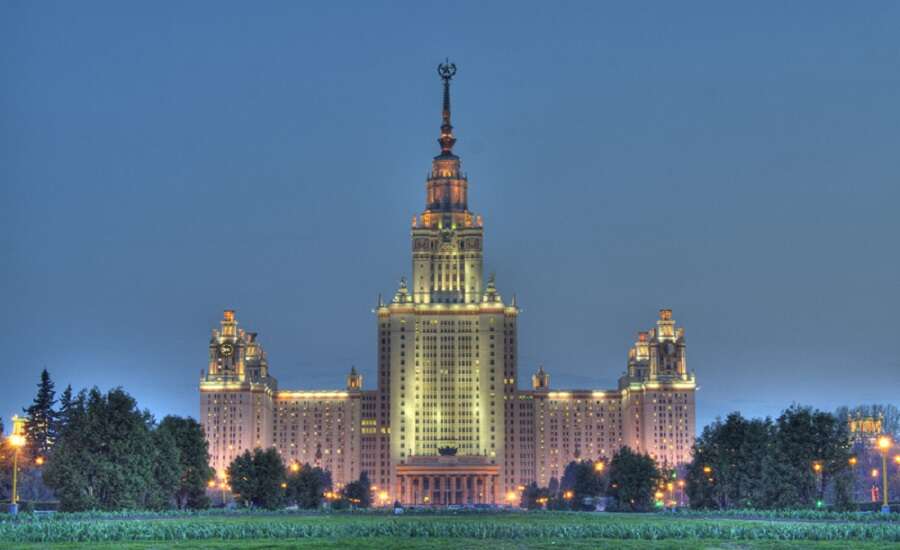
Photo by Eldar Vagapov on Wikipedia
Following the collapse of the Soviet Union, Moscow State University was instated as a self-governing institution. Today, the university is attended by over 40,000 students, and offers over 150 Bachelor’s degree programs and 500 Master’s degree programs in nearly all branches of modern science and humanities. It comprises 43 faculties and 380 departments staffed by more than 5,000 professors and instructors, among them 300 members of the Russian Academy of Sciences and other Russian state academies, and a library of almost 10 million volumes. Amongst its activities, MSU organises educational programmes attended by 10,000 high school students, Olympiads participated in by 200,000 high school students, and the All-Russia Science Festival, which attracts millions of participants each year.
The university’s long-standing democratic traditions continue in the ‘University Without Borders’ project, which provides online courses to over 300,000 students from 120 countries. MSU works closely with international universities and research institutes, and has branches in 8 other countries including China, Slovenia, and the CIS countries. Current developments at the university include the Vorobyovy Gory Scientific and Technological Valley, which aims to unite research institutes, educational organisations, and start-ups on one site.
Did you know? Projects of the Scientific and Technological Valley include a ‘Noah’s Ark’ biomaterials bank similar to the World Seed Store in Svalbard, and a Space Research programme which has successfully constructed and launched six satellites.
As Russia’s top university, Moscow State University counts many acclaimed figures among its alumni throughout the centuries, such as writers Mikhail Lermontov, Ivan Turgenev, and Anton Chekhov, the ‘father of Russian socialism’ Alexander Herzen, and statesman Grigory Potemkin. Of 18 Russian Nobel Laureates, 11 are graduates and professors of Moscow State University, and include Boris Pasternak, who won the Nobel Prize for Literature in 1958, and Andrei Sakharov and Mikhail Gorbachev, who won the Nobel Prize for Peace in 1975 and 1990 respectively.
• Main campus: Located on Vorobyovy Gory (Sparrow Hills). The campus is home to the world’s largest educational building, with a viewing platform on its 32nd floor, expansive and verdant grounds, the Museum of Geology, Botanical Garden, and a famous viewpoint offering a panorama over Moscow
• City centre campus: Home to other attractions affiliated with Moscow State University, including the Zoological Museum, Museum of Anthropology, and Apothecary Garden
The main campus of Moscow State University is located on Vorobyovy Gory, the highest point in Moscow. It comprises over 1,000 buildings, including the main university building constructed by Lev Rudnev – at 240 metres high, this is the tallest of Stalin’s ‘Seven Sisters’ skyscrapers and the largest educational building in the world. Although the buildings themselves are off-limits to the public, visitors can explore the expansive and verdant campus grounds, and visit the hilltop viewpoint at the front of the university which provides a panorama across Moscow and a commanding view of the main building across 500 metres of gardens. It is possible to arrange a private tour to the open-air 360-degree viewing platform on the main building’s 32nd floor.
Did you know? The main building is crowned with a gigantic 12-ton star!
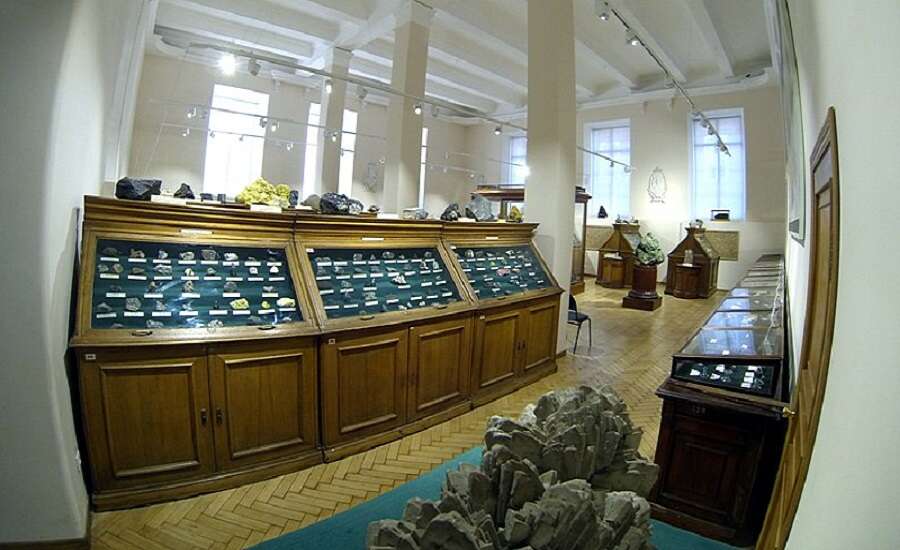
Photo by Ivtorov on Wikipedia
The museum was founded in 1950 and occupies the 24th – 31st floors of MSU’s main building. Its expositions cover the geology and geography of Russia and the world, the tundra, forest, and steppes of Russia, volcanoes, earthquakes, sea activities, the ancient history of the world, minerals of the world, and the structure of the universe. More information can be found here.
Did you know? Visitors to the Museum of Geology can even see a meteorite!
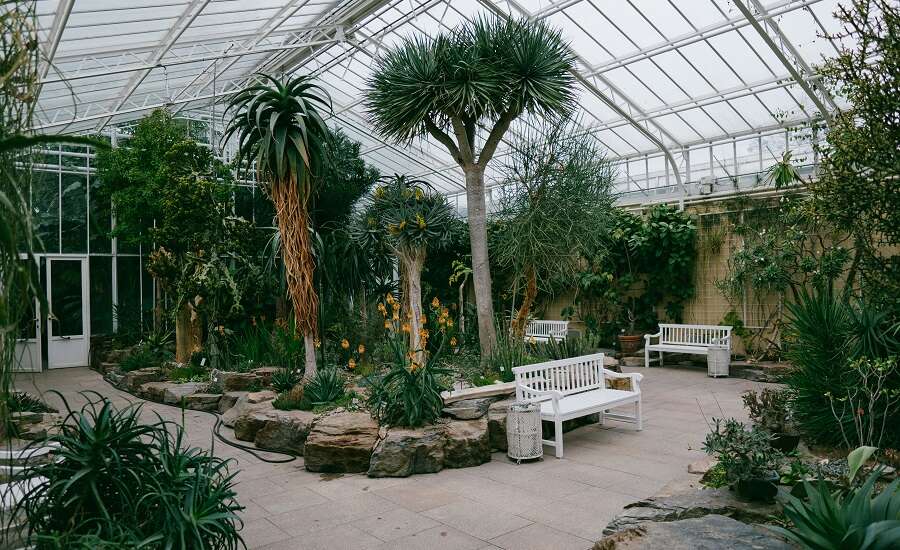
Photo by Marcel Heil on Unsplash
The gardens were established in 1706 by Peter the Great for the cultivation of medicinal herbs. The newer Botanical Garden of the Biology Faculty is situated on the main campus and comprises fruit trees, a rock garden, lake, and thousands of varieties of flowers. The older Apothecary Garden is located north of the city centre on Prospekt Mira and is home to manicured flower gardens, an arboretum, and greenhouses of exotic and rare plants.
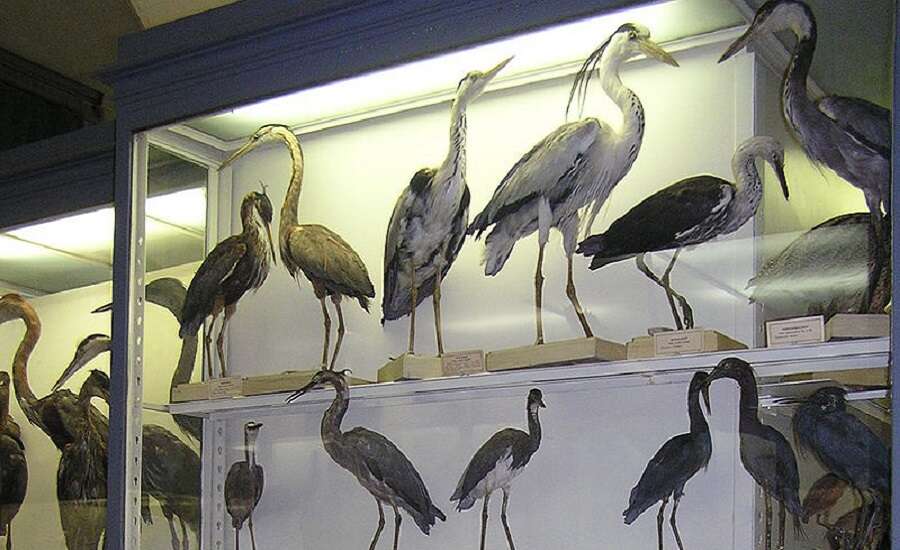
Photo by Andrew Butko on Wikipedia
The museum was founded in 1791 as the Cabinet of Natural History of the Imperial Moscow University, and opened to the public in 1866. It contains exhibits of birds, mammals, reptiles, insects, fish, and rare animals from around the world. The museum is located on Bolshaya Nikitskaya Ulitsa. Further information can be found on the website.
Did you know? The Zoological Museum is also home to a woolly mammoth skeleton, and visitors can hold reptiles in the Scientific Terrarium!
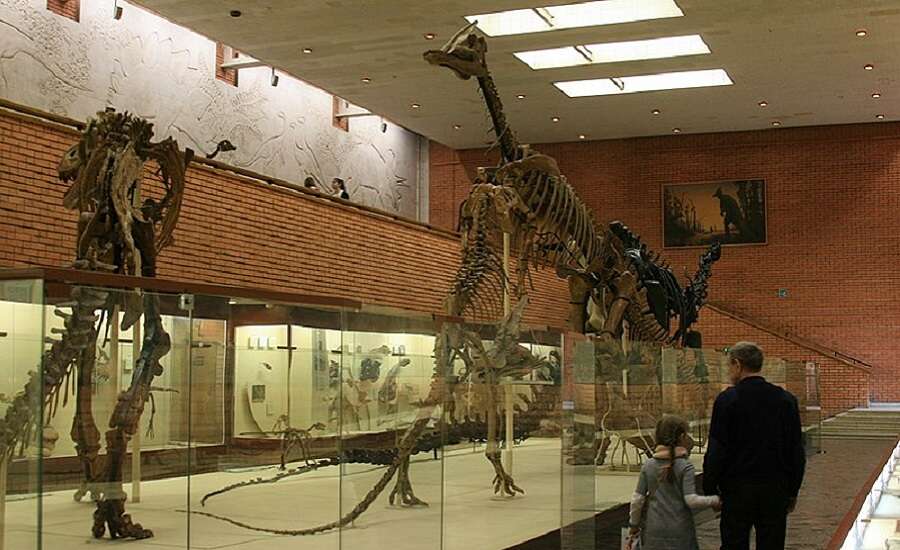
Photo by GaKaGaMa on Wikipedia
Founded in 1883, the museum belongs to the university’s Institute of Anthropology and is located on Mokhovaya Ulitsa. It traces the activities of mankind from its origin to the present day, and collections include skeletons of hominids and other archaeological items found throughout Eurasia from the Palaeolithic era to the Middle Ages, and 13,000 exhibits of ethnographic interest including clothing, artwork, and home items. Visits are arranged in private tours. See the website for more information.
• Luzhniki Stadium – the national stadium of Russia and the country’s largest football stadium, which hosted the 1980 Olympic Games and 2018 World Cup. Visitors can take tours of the stadium or – even better – enjoy a football match there! A 720-metre cable car travels from Vorobyovy Gory to the Luzhniki Stadium, offering unparalleled views over Moscow.
• Novodevichy Convent – one of ancient Moscow’s most sacred sites. It is the most magnificent example of Moscow Baroque architecture preserved in Russia to this day, seen in its churches, palaces and towers, is home to a treasure trove of religious artifacts and artwork, and is the resting place of Russia’s most eminent figures.
Address and Contact Details
Moscow State University, Ulitsa Leninskiye Gory, 1, Moscow, Russia, 119991
Tel: +7 (495) 939-10-00
Website: www.msu.ru
Email: info@rector.msu.ru
Nearest metro: Lomonosovskiy Prospekt (1.1km), Universitet (1.8km), Vorobyovy Gory (2.9km, with a scenic walk through the riverside park and university groun
Opening Hours
The buildings and grounds of the main campus on Vorobyovy Gory can be viewed from outside at any time of day. Opening hours for the university’s museums and tours may be found on their websites.
Join us on Facebook
We invite you to become a fan of our company on Facebook and read Russian news and travel stories. To become a fan, click here.
Join our own Russian Travel, Culture and Literature Club on Facebook. The club was created to be a place for everyone with an interest in Russia to get to know each other and share experiences, stories, pictures and advice. To join our club, please follow this link.